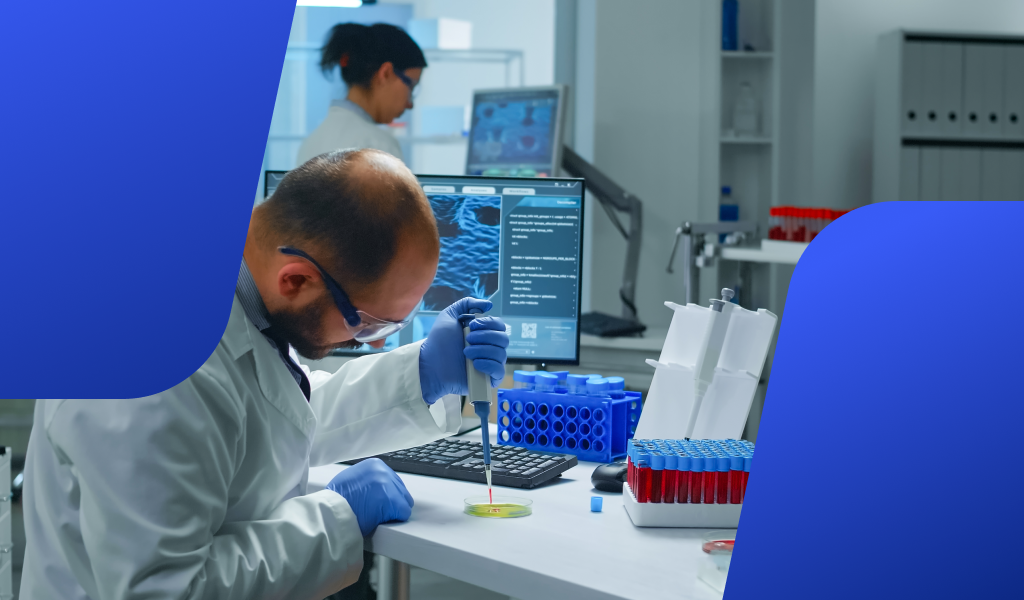Predictions for 2023 Pharma and Life Science Supply Chains
By Mahesh Veerina, CEO, ParkourSC
The incredibly fast development, clinical trials, and production rollout of Covid vaccines validated that when you put all your resources into focusing on faster patient outcomes, you can manually push through vaccines and therapies at a fantastic pace. However, this event highlighted that the standard pharma supply chain is inadequate when speed and agility are needed.
The takeaway is that the pharma supply chain can be agile and flexible when planning and operations work together. We can better integrate planning with operational signals, minimize manual intervention for repetitive tasks and achieve amazingly fast patient outcomes. The technology today to seek this speed and agility is available.
In addition to vaccine development, clinical trials and new personalized gene and cell therapies will require a fast, resilient and agile supply chain. To achieve this goal, here are predictions that will shape pharma and life sciences supply chains:
1. Planning for the Real World with Increased Adoption of Continuous Execution Planning
Annual or quarterly planning will be enhanced by on-demand, continuous execution planning. The speed of change and disruptions in today’s supply chains requires the organization to continuously re-plan while ensuring alignment with quarterly and monthly integrated business plans. Changes and disruptions in sourcing, manufacturing, logistics, and distribution, along with quick changes in priorities, may dramatically affect the monthly plan and require immediate replanning instead of having operations manually resolve disruptions and go off-plan.
Using real-time signals from your supply chain, your planners and operations specialists can more nimbly solve disruptions and get back on track or adjust plans in minutes. Companies will look for digitization solutions that combine data and execute in the gap to eliminate or minimize the variance between planning and real-time execution data. But this can only happen with a highly orchestrated supply chain embedded with digital twins and decision intelligence.
2. Moving Beyond the Limitations of “Visibility” with Deeper Partner Collaboration
Control towers and silos are out. Multi-systems data silos, excel spreadsheets, and manual text or calls cannot be the usual process to solve disruptions or quality excursions. Vendors or suppliers must be made partners in your supply chain. Visibility must be extended from active pharmaceutical ingredients (APIs) suppliers to the patient or hospital. Everyone should be able to see the supply chain flow and where their shipments or packages are in real-time. Disruption alerts must go directly to the company or the functional department that can resolve the issue with speed.
In addition, with the increase in mergers and acquisitions (M&A) and tight partnerships between pharmaceutical companies, CDMOs, and CMOs, visibility across multiple organizations, along with better digital collaboration, is sorely needed. These various organizations cannot be siloed in data, analysis, or execution, or the entire supply chain will fail especially if there is a major disruption, change in demand, or supply that affects multiple points in the supply chain.
A shipment delay with the potential to disrupt the timely delivery of products and impact a patient outcome should alert someone other than the carrier or logistics provider, who then contacts the distributor or manufacturer, who then contacts their customer support department that can provide alternatives to the end customer patient or hospital. A modern supply chain should be something other than a game of telephone. All the stakeholders in the value chain, along with the patient or hospital, should be automatically notified, along with customer support, who will provide options for delivery using a modern automated collaboration system. Simultaneously, logistics is notified to look at rerouting options while manufacturing looks to produce another batch, depending on the delay time. Everyone in the supply chain that can help manage and solve the disruption should have visibility, no matter if they are inside or outside the manufacturing or CDMO. Pharma and CDMOs will look for digital ways to work better together.
3. Decision Intelligence and Automated Workflows
As discussed above, manual processes are inefficient, costly, and important details may get lost. We will see more use of AI and automated workflows in the supply chain to resolve disruptions. What if an AI can decide on routing or carriers depending on current real-time data, carrier performance, or the most cost-efficient routes. In fact, if you have Environmental, Social, and Governance (ESG) requirements, they can also find the best routes to minimize carbon emissions. This would be like a more sophisticated Waze or Google Maps for logistics. How much time and stress would that save your team and help meet your cost savings goals?
What if you can also use automated workflows or AI recommendations for possible temperature excursions? The system could alert you to potential temperature excursions in a shipment and then reroute the shipment to a refrigerated truck or a cold chain repackaging facility, so you meet quality compliance or not lose that drug shipment. These AI and automated workflows can initially solve predictable disruptions due to traffic, weather, delays, spoilage, and production delays and free your supply chain resource up to look at priority issues, i.e., determine allocation due to shortages, long-term disruptions and sourcing local APIs.
4. Automate Response to Disruptions with Digital Twins
As more and more companies look to digitize their supply chains, provide end-to-end visibility to all supply chain ecosystem participants, and expand beyond control towers to a true supply chain command center, they will have the signal feed and infrastructure to deploy digital twin technology.
If you have not heard of what a digital twin is, it is a digital representation of your real-life supply chain infrastructure and processes. But it is more than a static model; it is a living model that continuously gathers signals from real-time sensors, transactional signals, and contextual data like traffic, weather, port closures, and risk signals in your supply chain. With a digital twin, you can view your entire supply chain in real-time. Location, temperature, humidity, or other quality indicators can be monitored along with contextual information on traffic, weather, and disruption events. This digital twin extends beyond your four walls to your entire supply chain ecosystem.
A digital twin allows more than just visibility but can perform predetermined actions based on embedded AI models and business rules. You can also model these automated responses before adding them to production. For example, you can model a disruption and different response options: rerouting, new production, different inventory allocation, lot sizes to manufacture, plan expedited air freight, or allow an AI algorithm to recommend the most optimum outcome. After you are confident of the response, you can put this into production workflows. Because this digital twin encompasses an end-to-end model, you can identify potential problems several nodes out and take corrective action quickly in concert with your supply chain partners. You can also better streamline the supply chain by identifying duplicate connections set up by different departments.
With the need for better inventory allocation, digital twin technology can model your worldwide allocation to match regional demands. And as you reshore manufacturing to be close to the end customer, this technology can easily add new facilities and model the new supply chain to optimize on-time and in-full deliveries.
This is a powerful tool that provides the command center view of your entire life science supply chain. As companies digitize their supply chain, they will move to digital twin technology to lower costs, improve delivery times, optimal inventory performance and minimize disruptions to their supply chain.
5. More Focus on Sustainability
In this age of cell and gene therapies and personalized drugs, each shipment is much more critical. Reproducing a lost shipment is a much higher cost and longer delay, and may put patient outcomes at risk or a clinical trial study at risk. Gone are the options of creating a warehouse of safety stock or producing a year's worth of supply in one production run. With therapies that have a shorter shelf life and require cold chain custody, each shipment must be produced and shipped Just In Time (JIT).
Because of the expense, time, and patient need, waste is much more unacceptable. The supply chain will focus more on reducing waste, shelf life expirations, spoilage, temperature excursions, etc. Quality control will be added in every process step, including in-transit real-time monitoring. This must be enacted to reduce waste, lower costs and improve patient outcomes. Better visibility with digital track and tracking will reduce waste but implementing a more agile and fast supply chain is the ultimate goal to meet the new types of therapies and improve care.
In addition, we are seeing logistics and packaging companies more focused on sustainability and adding reusable packaging and smart sensors. These packages and sensors will be part of the circular economy that produces less waste, lowers costs, and is trackable worldwide.
6. Move from Control Towers to Command Centers
The move from control towers to command centers allows you to accomplish the predictions above. We have talked to companies using control towers, and they express frustration that they are domain-specific and primarily focused on logistics and shipments but not on product sourcing, manufacturing, storage, and movement. They also complain that control towers are like watching a slow-moving car crash but have no control to prevent it.
However, command centers encompass your entire supply chain in real-time and are multi-company and multi-domain. You can have visibility from raw material suppliers to warehouses to last-mile delivery. But the most significant advantage of command centers is that you can act on real-time data or predict possible disruptions and resolve them with workflows or AI recommendations. So instead of just watching the car crash, you can act to prevent it automatically.
Because command centers allow all participants in your supply chain ecosystem to view the data through digital twins, it can speed up decision-making across companies to resolve disruptions. Instead of just looking at shipments between locations, command centers analyze the product flow in your supply and demand side along with warehouse and in-transit inventory so you can make a more optimized decision that works across your supply chain instead of just logistics.
Summary
These predictions help solve the underlying needs in the pharma and life science supply chain. To meet the patient's needs for personalized therapies, new gene, and cell therapies, and new yet-undiscovered vaccines, the supply chain must move from manual processes to a fully digitalized environment with workflows and AI recommendations using an end-to-end command center. Planning and operations must work together on one single source of truth and solve disruptions together with their 3rd party partners. Visibility must extend to all participants in the supply chain to resolve issues quickly and get those drugs to the patients as quickly as possible.
What does all this gain? Faster clinical trials. The more resilient supply chain for disruptions. A supply chain built for new growth of new therapies and vaccines. Less waste and spoilage. And better patient outcomes.
If you want to see how we are moving pharma manufacturers, CDMOs, and logistics companies to this new world, talk to us at ParkourSC.com.
















